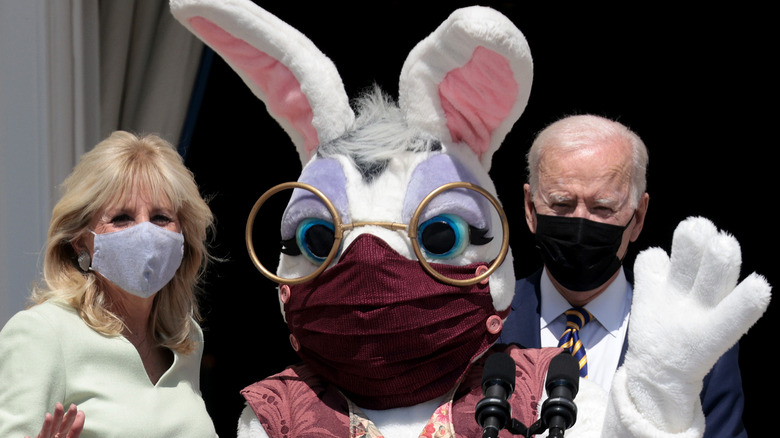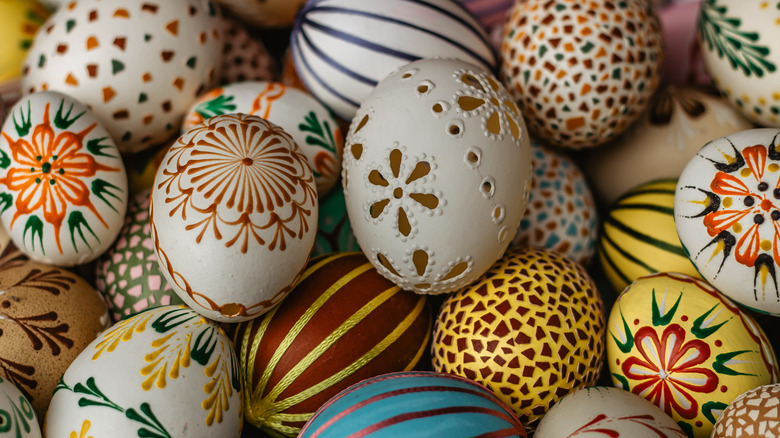When Was The Easter Bunny's First Visit To The White House?
Few holidays have as many mixed-up or misunderstood traditions as Easter. On the surface, it's a holiday about the miraculous resurrection of Jesus Christ three days after he died, and a story of renewal and rebirth directly tied to the spring equinox, as Time and Date points out. It seems all of our modern Easter traditions sprout from this kernel, in particular: rabbits and eggs.
The association between Easter and hares can only be attested as far back as the 1600s when it was first mentioned in Germany. In this early incarnation, the Easter hare is a sort of springtime, cunicular Santa Claus, bringing colorful eggs for good children (via Mental Floss). In anticipation of their rewards for good behavior, children would make a nest for the hare to lay its eggs in, according to Country Living.
After German immigrants brought this tradition to the U.S., it spread to the broader population. Eventually, the custom evolved into chocolates and candies, supplanting the original eggs, and the hare transformed into a rabbit. Despite this growing popularity, the Easter rabbit didn't make its debut at the annual White House Easter festivities until 1969 (via The White House Historical Association).
Easter at the White House
When staff members of First Lady Pat Nixon donned Easter bunny outfits the Monday after Easter in 1969, they were adding to a long tradition of Easter celebrations in Washington, D.C. The tradition of Easter egg rolling began sometime in the 19th century with local children gathering in public spaces, especially the grounds of the Capitol building and the White House (via Snippet of History).
In the 1870s, Congress passed a law that effectively banned egg rolls on the Capitol lawns due to the destruction caused by the thousands of children. But, in 1878, President Rutherford B. Hayes came to the rescue by hosting the first official Easter egg roll on the White House lawns, according to History.
Since then, the tradition has continued unbroken (other than a few gap years for weather or war). Today, the annual gathering is attended by thousands, and children can participate in egg hunts, egg races, meet the U.S. president, or listen to live musical performances.
Why the eggs?
Eggs have been sacred symbols for thousands of years and are closely associated with rebirth and resurrection. The Egyptians believed that the sun god was born from a sacred egg, as Scientific American points out.
However, the tradition of decorating eggs may be even more ancient than their sanctity. According to the University of Cambridge, decorated ostrich eggshells have been found in southern Africa that are up to 60,000 years old. Yet, the Christian tradition of dying eggs seems to come from Persia and was adopted very early in the Church's history (via "Observations on the popular antiquities of Great Britain").
Eggs are also one of the foods which are traditionally abstained from during the 40 days of Lenten fasting. When Lent was over (on Easter Sunday), churches would bless the eggs so that their congregants could then include them with their meals (via Kiwi Hellenist). In fact, it's believed that Easter became one of the candy holidays as the day marks the end of Lent — when many people abstain from sweets foods, as Abdallah Candies notes.


